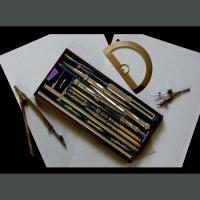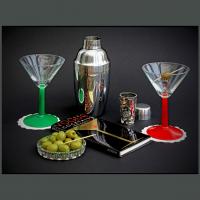Still life images are a fundamental skill for anyone with a camera – the reasons are many but essentially a still life is the rare opportunity to take an image totally under the photographer’s control, and in some respects similar to painting. The subject matter is inanimate – it may be flowers, glass, rocks, sea shells, food such as fruit, anything non-moving and typically arranged in a small group, often on a table or desk-top. The arrangement of the components, the lighting, whether high key or low key, whether to shoot in colour or in black and white, what depth of field and thus which camera settings to use, and even the angle to take the shot, are all in the control of the photographer, and the success (or failure) of the resulting image is entirely his or her work.
So having the idea for the intended image, planning, and choice of objects to be photographed, their arrangement and their lighting are the essential skills. But the great advantage of still life work is that it is inanimate and doesn’t move – if the image doesn’t work the first time, then re-arrange, add to or take away some of the components, and take it again – you the photographer have the time and opportunity to take complete control and to practice until satisfied with the final image.
There are no rules as regards the equipment to use for a still life – any camera or mobile phone can take a still life image – but perhaps it is appropriate to suggest a couple of items. The first is the use of a tripod which will ensure a stable platform for your shot, and enable repeat attempts with different camera settings or different compositions to get the exact shot desired. The second (though less important) is to use a lens in the range of 50mm-100mm – this will give a perspective very similar to the way the human eye sees things.
Lighting may be daylight or flash, whilst the use of “light modifiers” will be helpful in building your image. Modifiers may be reflectors – inexpensive ones are available such as kitchen foil or white card to “bounce” light into a specific area of the shot to give emphasis to your composition – or net curtain to diffuse and soften the light, or even black card to reduce or stop the light hitting certain areas of the shot. Remember that you are trying to build impact and atmosphere so lighting and the placing and intensity of your highlights and shadows will be critical to the final image. The use of the on-camera flash is probably not the best option as this tends to result in harsh shadows and very flat lighting.
I have written previously on the magic of monochrome. Removing colour from an image means other elements such as contrast, texture, tone, and shape all become priorities in your composition, so plan accordingly.
However, the best shot will not be dependent on the equipment you use but on your imagination – your idea and vision of the intended image, and whether you have the creativity to make it happen. Cameras take the image in fractions of a second, but a still life takes time to create. As with many aspects of life, practice and more practice will help develop technique. The images accompanying this article are all by Ron Shimmin, a life member of the IOMPS and one of our most meticulous and skilled workers.
However you take your images, if you like the result, then good enough – your shots will provide pleasure and enjoyment. Check out our website – www.iomps.com and our Facebook page for more ideas to stimulate and inspire your photography.
Chris Blyth



